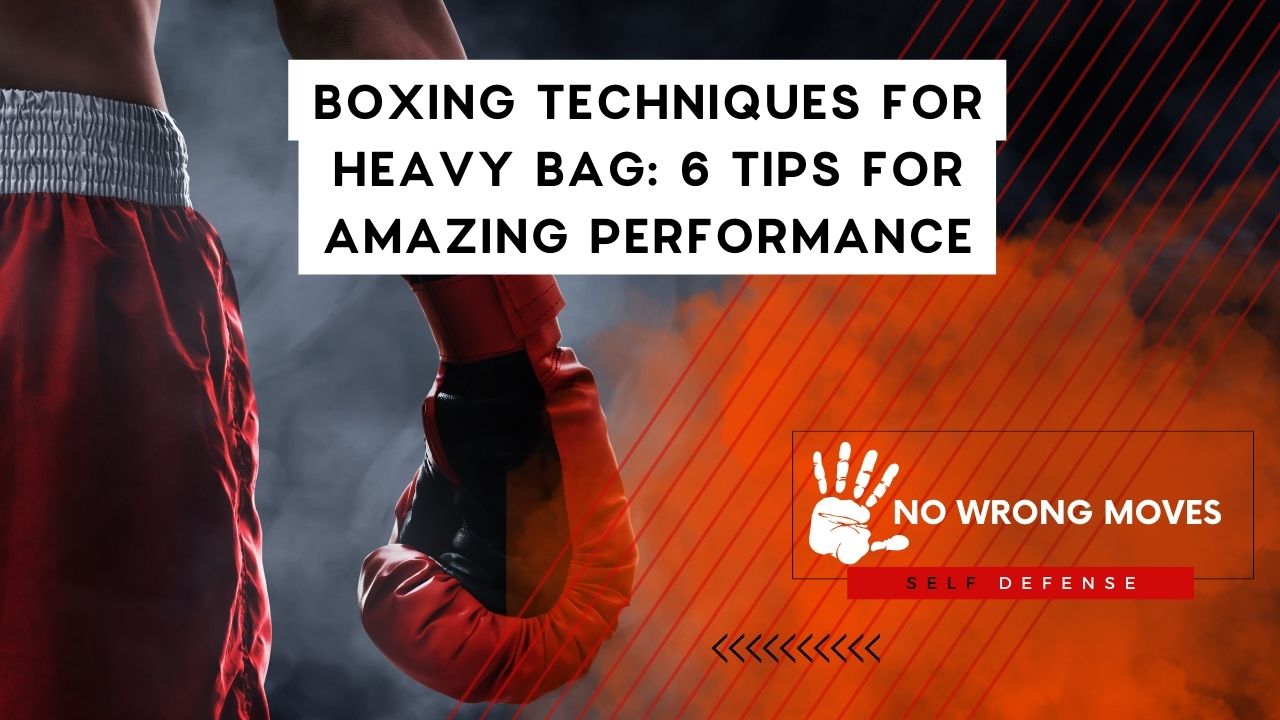
As a boxing enthusiast, one of the most important pieces of equipment in your gym is the heavy bag. It's an essential part of your training and can help you develop the necessary skills to become a better boxer.
It doesn't matter if you're a beginner or an experienced boxer, incorporating these boxing techniques for heavy bag into your training routine can help you improve your performance.
Master Your Footwork
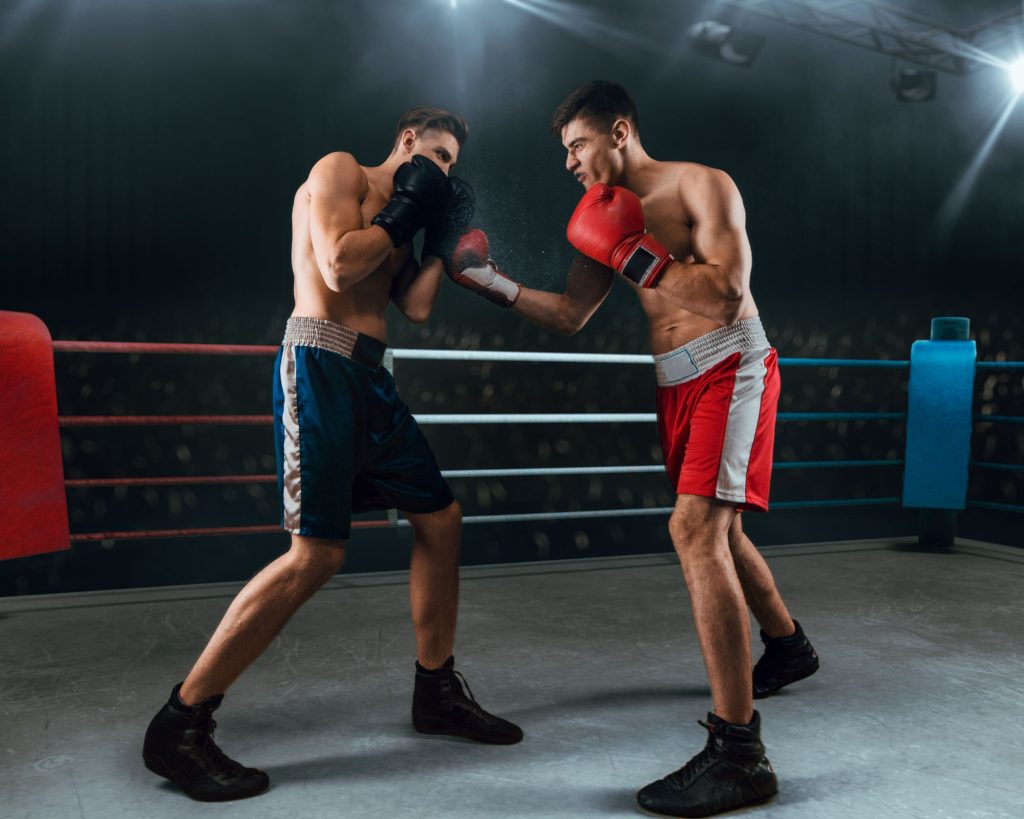
Footwork is a crucial aspect of boxing. The key to mastering your footwork is to practice basic moves like the jab step, pivot, and shuffle. By improving your footwork, you can become a more efficient and effective boxer.
In boxing, footwork is a critical component that cannot be overlooked. It helps you maintain balance, agility, and speed while allowing you to move around the ring with ease.
Excellent footwork ensures that you maintain a strategic position, making it easier to land those crucial punches while keeping your opponent's attacks at bay.
Maintaining balance is also obviously crucial, and good footwork enables you to move seamlessly around the ring, making it challenging for your opponent to take you down.
In fact, footwork could be your ultimate defensive mechanism when you find yourself in compromising situations like being cornered against the cage. With a few well-executed steps, you can quickly evade danger and come out unscathed.
To perfect your footwork, there are a few fundamental principles that you should keep in mind. For instance, always stay on your toes to facilitate swift movement around the ring.
Furthermore, keeping your feet shoulder-width apart is critical for balance, while relaxing your body and keeping your hands up will help you defend yourself against your opponent's attacks.
Finally, practice moving side to side, forward, and backward to become more confident and comfortable moving around the ring.
Learn The Art Of Punching
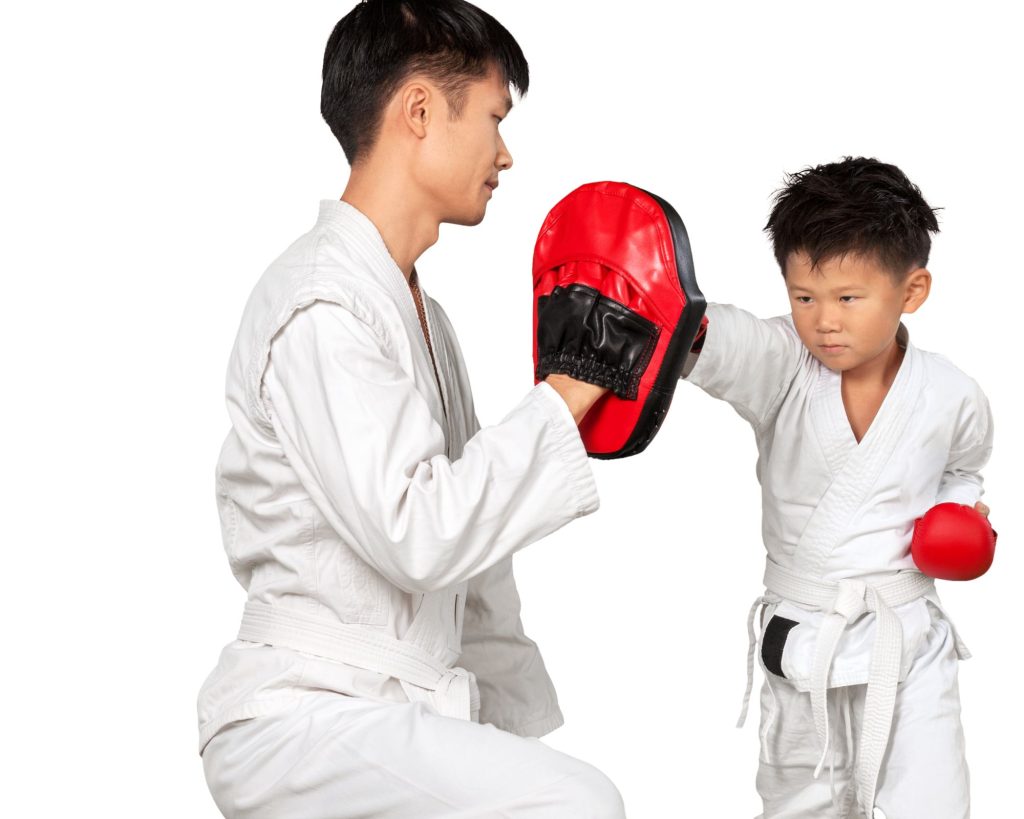
Boxing is a sport that requires mastery of various techniques, including punching.
There are four primary punches in boxing: the jab, cross, hook, and uppercut. The jab is a quick, straight punch thrown with the lead hand, aimed at the opponent's face or body. It's often used to keep the opponent at bay or set up other punches.
The cross is a straight punch thrown with the rear hand, usually following the jab. This punch packs more power and is aimed at the opponent's head or body.
The hook is a circular punch thrown with either hand, targeting the opponent's head or body. It's often used to surprise an opponent or land a punch after ducking under an opponent's attack.
The uppercut is a short, upward punch thrown with either hand, targeting the opponent's chin or body. It's often used in close range to surprise the opponent or land a punch after slipping under an opponent's attack.
Each punch requires different techniques and movements, and they can be used in combination to create a variety of punches. For example, the jab can be followed by a hook or uppercut, while the cross can be combined with a hook.
Punching in boxing requires proper form, balance, and coordination. Good footwork is also essential to ensure that punches land accurately and with power.
You should note that punching in boxing isn't just about brute force. It's also about strategy and timing. Knowing when to throw a punch, where to aim it, and how to follow up are just as important as the physical execution of the punch.
Practice Combination Punches
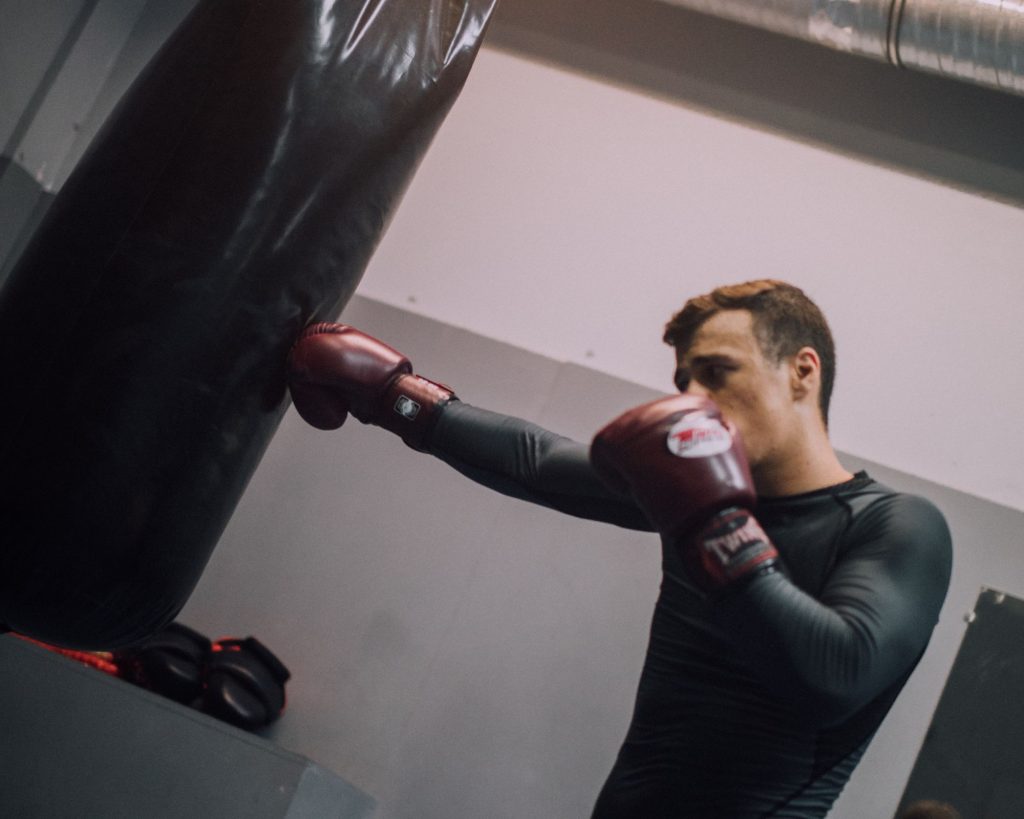
Combination punches are a series of punches thrown in quick succession. To be able to reasonably compete as a boxer, you'll need to develop the ability to do just that, throw punches in combination. They are a great way to catch your opponent off guard and land effective punches.
While it's important to focus on the basic punches like the jab, cross, lead hook, rear hook, left uppercut, and right uppercut when you first start boxing training, relying on these alone won't be enough to win fights.
Boxers who only throw one punch at a time are at a disadvantage as it doesn't pose a significant threat to a seasoned boxer and makes it easier for them to counterattack.
On the other hand, when you throw punches in bunches, your chances of landing a few punches increase significantly as your opponent is forced to deal with attacks coming from different directions and angles.
To execute combination punches, start with a basic jab and follow it up with a cross, hook, or uppercut. Practice different combinations to find the one that works best for you.
Focus On Your Breathing

Boxing is an intricate sport that requires immense dedication and attention to detail. It demands perfection in every technique, and while it isn't necessarily complicated to learn, mastering them takes years of training and repetition.
But despite the emphasis on technicality, many boxers overlook the importance of proper breathing technique.
Proper breathing is crucial to maximizing every technique's potential and optimizing energy expenditure. It can prevent boxers from running out of gas and give them more energy down the stretch, allowing them to impose their will on opponents.
With proper breathing, boxers can move more fluidly and avoid getting "sea legs," a feeling of lethargy caused by inadequate oxygen regulation.
But proper breathing doesn't just benefit a boxer's stamina and movement. It also enhances their punching power. By exhaling sharply through the nose with every punch, boxers can invite an influx of air into their muscles, maximizing power output and speed.
In summary, proper breathing is imperative to a boxer's success in the ring. It may seem like a small detail, but it can make all the difference in a 12-round bout.
Every aspiring boxer should pay attention to their breathing technique early in training, making it a habit that will benefit them in the long run.
Use Your Body Weight

Any avid boxer will tell you that boxing demands quite a lot from its athletes. It requires strength, agility, and endurance, but one aspect that is often overlooked is the importance of using your full body weight in every punch.
Using your body weight to your advantage is a key technique in boxing. By transferring your weight from your legs to your hips and shoulders, you can deliver explosive punches that will leave the bag trembling. The key is to use your entire body to generate power, not just your arms.
When throwing a punch, it's not just about using your arm and shoulder muscles, but also engaging your entire body to generate power and speed.
By using your full body weight, you can increase the force behind your punches and deliver more damage to your opponent.
This means not only being able to hit harder but also being able to sustain your power throughout a fight. It's not just about having a strong punch but being able to throw it repeatedly and with accuracy.
Boxers train for hours to master the technique of using their full body weight in every punch. They work on their footwork, their balance, and their core strength to ensure that every punch they throw is delivered with maximum force.
It's a skill that takes time and dedication to master, but it's one that can make all the difference in the ring. So if you're looking to take your boxing game to the next level, remember to engage your entire body in every punch, and you'll be amazed at the difference it can make.
Incorporate Defense Techniques
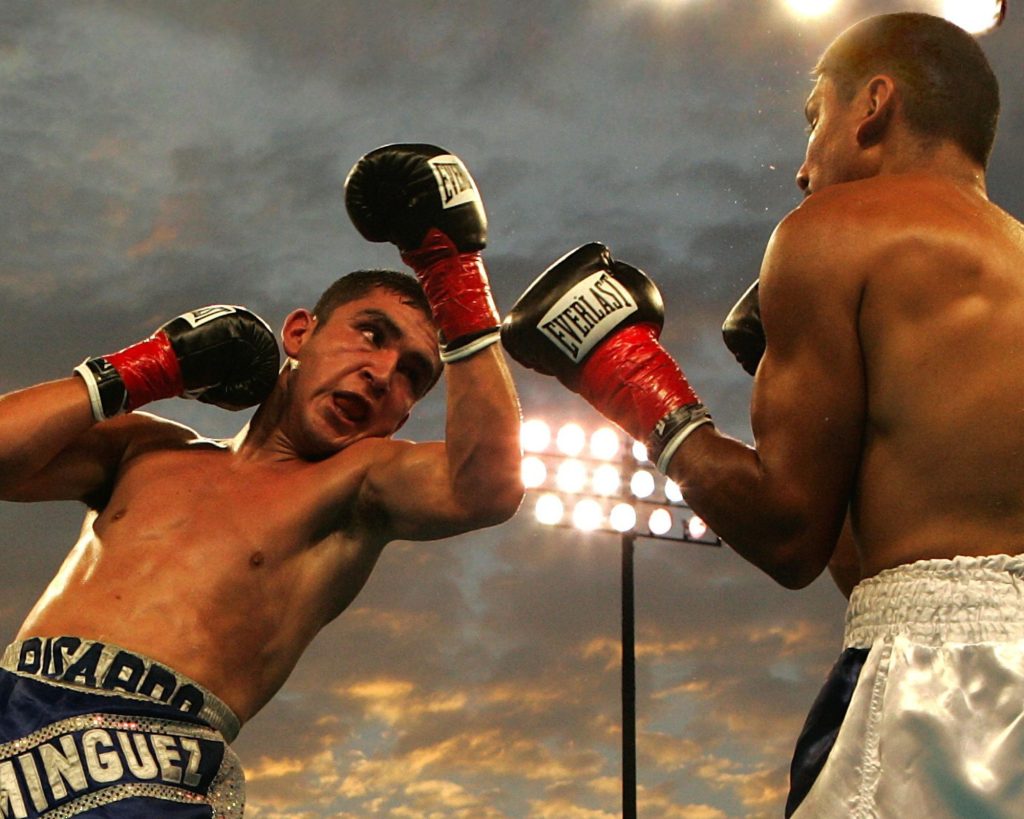
Defense is just as important as offense in boxing. Incorporating defense techniques into your heavy bag training can help you stay ahead of the game. Practice slipping, weaving, and blocking to improve your defensive skills and become a better all-around boxer.
In the ring, a good offense may be flashy and impressive, but it’s nothing without a solid defense to back it up. Defense is a critical component of boxing that fighters must master if they hope to succeed.
Blocking incoming punches, weaving through punches, and using footwork to evade strikes are just a few of the techniques that fighters must be proficient in. Without these defensive techniques, even the best offense can be shut down quickly.
Punch blocking is a critical aspect of defensive boxing, and learning this skill is essential for any boxer. By practicing defensive blocking drills with a partner, fighters can develop the muscle memory and reaction time necessary to effectively block punches in real-time.
And while it may be easier to learn with a partner, there are plenty of ways to practice on your own. Shadowboxing, working on a punching bag, and visualizing attacks are all excellent ways to develop your defensive skills.
Stay Consistent

Make sure to stick to a regular training routine and track your progress to stay motivated. By staying consistent, you can make steady progress with your boxing skills and become a better boxer over time.
Consistency and effort are the keys to success in boxing training, and this applies to any activity or type of training. And we're serious about that--we believe that talent is not just a matter of being born with it, bu gaining it through consistent effort.
Over the years, we have trained people from all walks of life, and we have seen that those who achieve success do so because of their commitment to consistent effort, not just raw talent.
Genetics may play a role in athletic ability, definitely, but showing up to every class, giving 100% effort, and doing extra training at home are what truly makes a difference.
In our experience, it's often the person who doesn't pick up boxing as quickly who tries harder, takes more classes, and eventually surpasses their more naturally talented friends.
This principle applies to all levels of competition, from amateur boxing champions to MMA world champions--the common thread is always the commitment to showing up and giving it their all.
Conclusion: Boxing Techniques For Heavy Bag

In conclusion, incorporating these boxing techniques for heavy bag into your training routine can help you improve your performance and become a better boxer.
Remember to focus on mastering your footwork, perfecting your punches, practicing combination punches, focusing on your breathing, using your body weight, incorporating defense techniques, and staying consistent.
By following these tips, you can take your boxing skills to the next level and achieve your goals as a boxer.
Curious to learn about wing chun next? Don't worry, we've got you covered!
[author-box-jpx-fitness]

